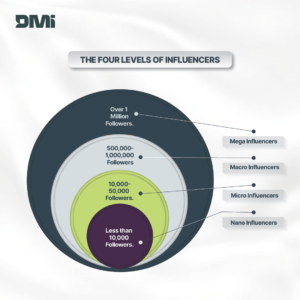Jump to Section
ToggleGenerative Artificial Intelligence has come to reshape the world of content writing as we know it. There’s no going back. The availability of numerous user-friendly AI tools has made it possible to generate text-based content like blog posts, product descriptions, and social media captions in a fraction of the time it takes human writers.
Of course, AI-generated content varies in quality, and there are undeniably ethical concerns surrounding plagiarism, misinformation, and the potential for AI bias to creep into content. Nonetheless, the growing adoption of the tools shows that it will set the pace for the evolution of content creation, redefining what it means to be a writer or content creator.
There are two major opinions on how Gen AI will impact content writing – some believe it will displace content writers, while others think it will augment their work. Regardless, writers can’t be indifferent since most writing tools today have AI features, and technology companies are constantly introducing new ones. According to industry leaders, the best idea is for writers to future-proof their careers by focusing on what AI tools can’t do and filling these gaps with their unique skills and talents.
What is Generative AI?
A generative AI is a type of AI technology that churns out content such as text, image, audio, and video through a simple text prompt. Trained with massive datasets, it learns the underlying patterns and relationships within that data, allowing it to create pretty new content that retains the characteristics of its training set. Content creators can now access Gen AI tools as standalone solutions or built-in features within existing content creation platforms. Standalone AI text generators like ChatGPT, Copy AI, and Jasper are commonly used by writers to draft content, among other purposes. Also, Grammarly, a writing assistant, has included Gen AI features allowing users to produce first drafts, rewrite the text, and change the voice.
Will AI replace Content Writers?
The growth of AI in recent years has opened up discussions about whether AI will replace human writers. While AI writing tools have some clear and sweeping advantages, they also come with limitations that good writers are better equipped to solve. One of the most significant benefits of AI writing tools is their ability to generate content and process vast amounts of data in split seconds. AI tools can create new product ideas, improve existing product designs, or create new business models. Additionally, these tools can improve content by detecting and correcting grammar, spelling, and other common errors.
However, AI writing tools come with limitations as well. For one, they lack the creativity and emotional understanding of human writers. This means that their output can often sound impersonal or robotic, lacking the nuanced tone and voice of human writing. Furthermore, AI writing tools can sometimes risk plagiarism as they often use existing articles or data to create new content by copying or paraphrasing previously published articles by other writers.
Relying solely on AI writing tools can put writers and businesses at significant risk. However, when used appropriately, these tools can make work easier, faster, and well-written.
To create content of the utmost quality and engage your audience effectively, it is essential to understand the limitations of AI writing tools and use them with human writing skills. By doing so, you can produce content that is both informative and engaging.
Top 5 Skills Human Writers Need to Remain Relevant in the AI Era
Writers must constantly adapt and improve their skills to thrive in the AI era. To that end, we have identified the top 5 crucial skills that will help writers to remain relevant and successful.
1. Fact-Checking
Fact-checking is the act of verifying how authentic a piece of content is. It is usually done by comparing the info at hand to credible sources of information. Gen AI tools often produce factually incorrect, biased, or outdated information, making fact-checking a necessity. A case in point was Google’s factual error while launching its first standalone Gen AI tool, Bard. The demo highlighted that the James Webb Space Telescope “took the first pictures of a planet outside our solar system when it’s actually taken by the Very Large Telescope (VLT). This error caused Alphabet, Google’s parent company, to lose billions of dollars in market value.
This incident serves as a valuable reminder that even the most advanced AI systems can generate errors, and human oversight remains crucial for ensuring the accuracy and reliability of information. Here are some tips to do fact-checking well enough.
- Check the sources cited in the content to see if they’re reputable and unbiased.
- Look for inconsistencies or errors in the text.
- Use fact-checking tools like Snopes, PolitiFact, or FactCheck.org to verify the claims made in the content.
- Consult with human experts in the relevant field to confirm the accuracy of the information presented.
2. Self-Editing
Gen AI can help writers by providing pre-written material, but it still requires human editing skills to shape it into desirable content. If a blog post is 100% AI-written, it would likely be dull and lack personality since the AI would repeat existing information it was trained on. Therefore, self-editing is essential when using Gen AI tools. Self-editing includes optimising content for clarity, flow, and conciseness, removing redundancies, and ensuring it effectively communicates the desired message. Additionally, a writer’s vital mastery of language is necessary to inject creativity and a unique voice that captivates the audience.
3. Research Skills
Primary sources are considered the strongest and most valuable resources in any research as they provide first-hand information that is difficult, if not impossible, to find elsewhere. In contrast, AI-powered tools and secondary sources rely on the interpretation and analysis of primary sources, which can lead to missed information or incorrect conclusions. On the other hand, human writers still have the prerogative to talk to people and generate new insights that add depth and context to subjects. They can conduct interviews, engage in discussions, and explore personal experiences that can reveal new perspectives and understanding of the topic.
An instance where this is important is an AI-generated travel blog post that lists the top tourist attractions in a given city without providing any unique insights or personal anecdotes. A human editor could add their experiences and recommendations, such as the best time to visit a particular attraction or a hidden gem only locals know about. This brings us to the next important skill.
4. Prompt Engineering
AI text tools require human input to generate any content. The quality and relevance of the generated output will depend on the precision and detail of human instructions or prompts. Providing clear, concise, and specific prompts is essential to get the best results. Compare the following two examples.
Prompt: “Write an ad copy for a smartphone with cool features and good quality.”
Output: “This smartphone has amazing features that you’ll love. You can do so many things with it, and it’s really high quality. Get this smartphone, and you’ll be amazed.”
Prompt: “Write an ad copy for a smartphone with a 5G network, a high-resolution camera, and a long battery life.”
Output: “The Jibson F10 is the perfect smartphone for the modern world. Its 5G network gives you lightning-fast connectivity, so you can stream videos and browse the web without interruption. And its high-resolution camera takes photos that are crisp, clear, and stunningly beautiful. Plus, its long battery life means you can enjoy all these features for hours on end. Get the Jibson F10 and experience the future of smartphones today!”
The first prompt gives a generic and uninspiring ad copy, while the second produces a more convincing one. This is why prompt engineering is important in this AI era. But don’t worry if you’re not an expert in prompt engineering yet. With practice, anyone can master this skill and produce high-quality content with the help of AI tools. So, keep experimenting and refining your prompts, and you’ll discover how much these tools need your prompt engineering skills to create high-quality content.
5. Ethical Sensitivity
Ethical sensitivity is a critical trait that enables individuals to recognize and respond to ethical dilemmas by making choices that align with moral ideals and standards. In the context of AI-powered content writing, it is essential to ensure that the generated content is aligned with ethical standards and values. This includes avoiding plagiarism, respecting intellectual property rights, and ensuring the content is accurate and unbiased.
Developing ethical sensitivity is not optional when using AI in content writing. We must overcome several ethical challenges to ensure that our use of AI is responsible, constructive, and ethical. For content writers, it is essential to learn how to track and document the entire content creation process, including AI model selection, data sources, and human interventions. Additionally, individual information should be anonymised while extracting insights. Finally, assessing AI outputs for accuracy, fairness, and potential harm is crucial.
Conclusion
AI-generated content can be precise and speedy, but it falls short of many other important writing qualities needed to produce high-quality content for a digital audience. For example, writing that strikes a chord with readers is highly relatable and nuanced, something AI tools cannot replicate well enough. To elaborate on this point, Carl Newport, a renowned author who writes about the intersection of technology and work, wrote:
“The bulk of the writing that knowledge workers actually perform tends to involve bespoke information about their specific organisation and field. ChatGPT can write a funny poem about a peanut butter sandwich, but it doesn’t know how to write an effective email to the Dean’s office at my university with a subtle question about our hiring policies.”
The key to effectively using Gen AI is as a tool to assist human writers rather than a replacement for them. These tools can streamline workflows, spark creativity, and enhance content quality when used thoughtfully. However, caution and vigilance are critical. Always fact-check the generated output, ensure proper citation, and remember that no AI can replicate the nuance and authenticity of human expression (yet).






